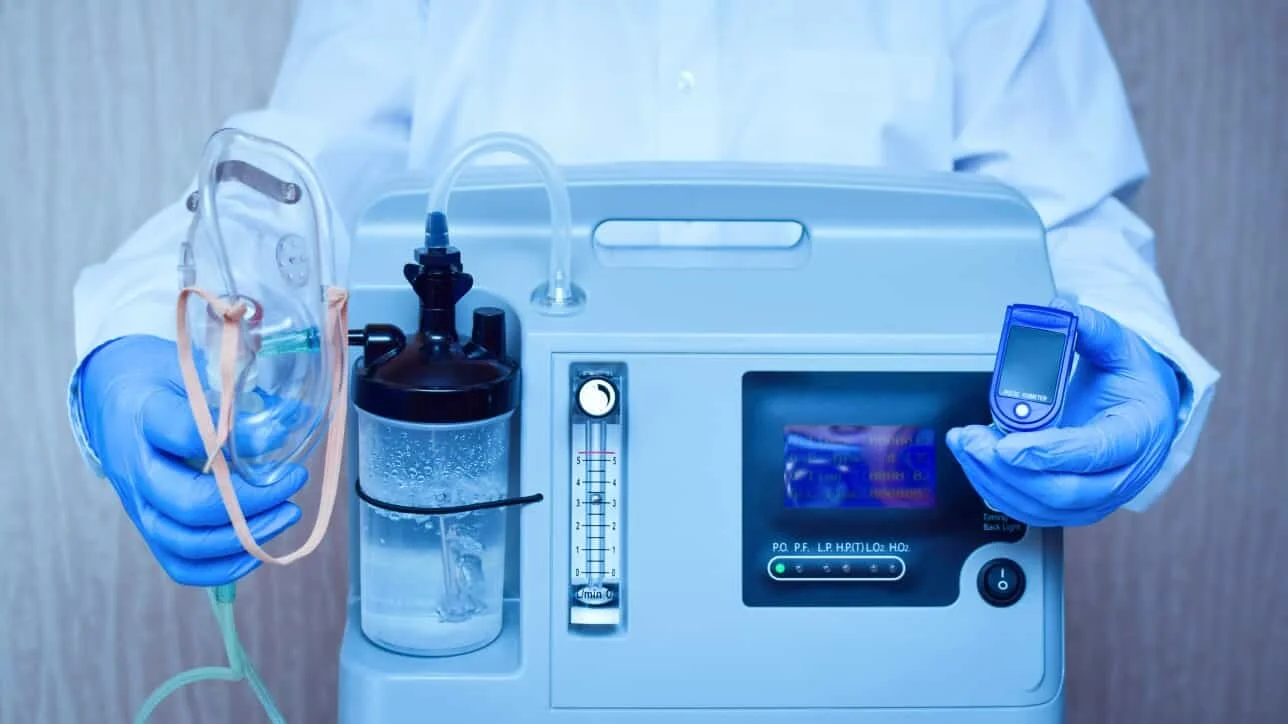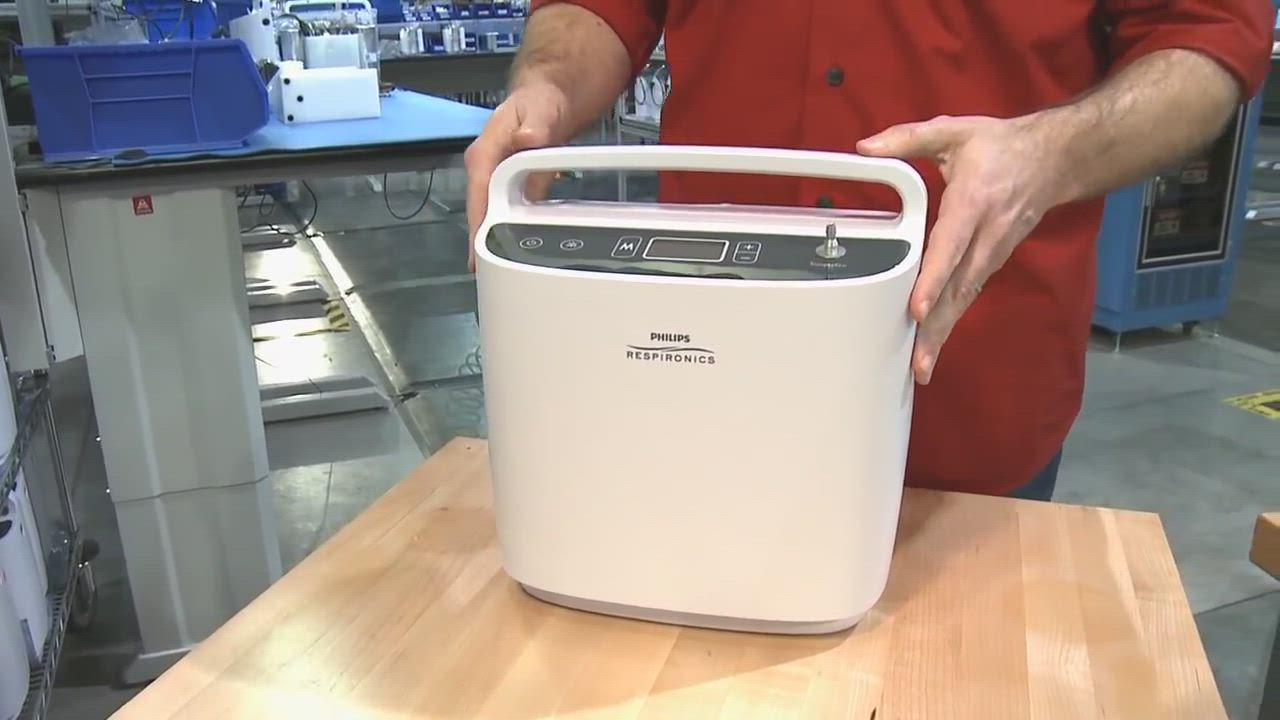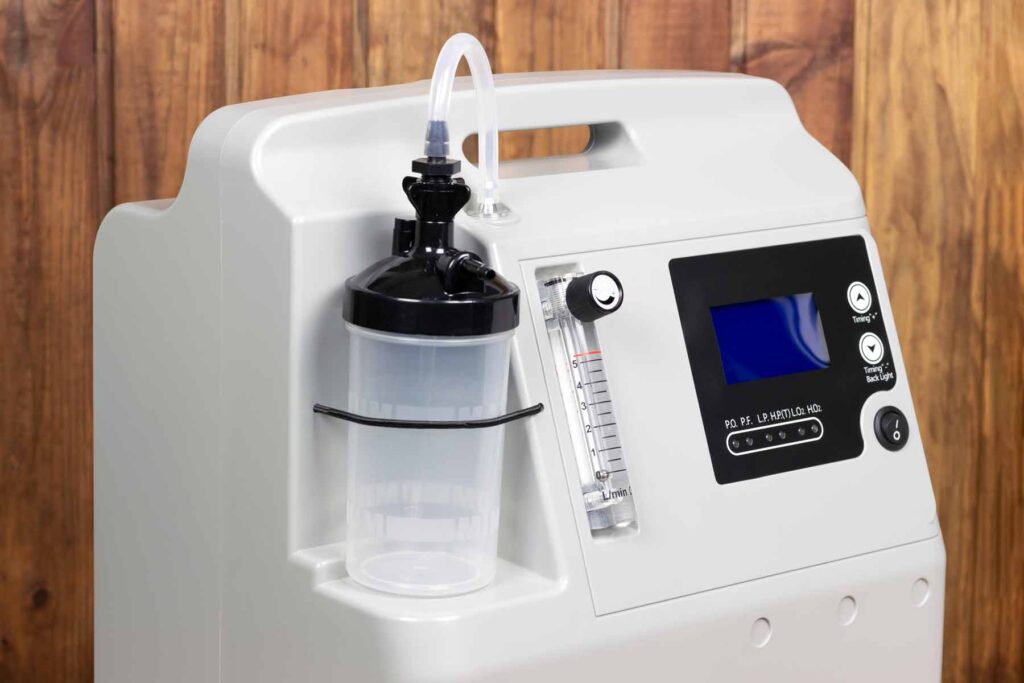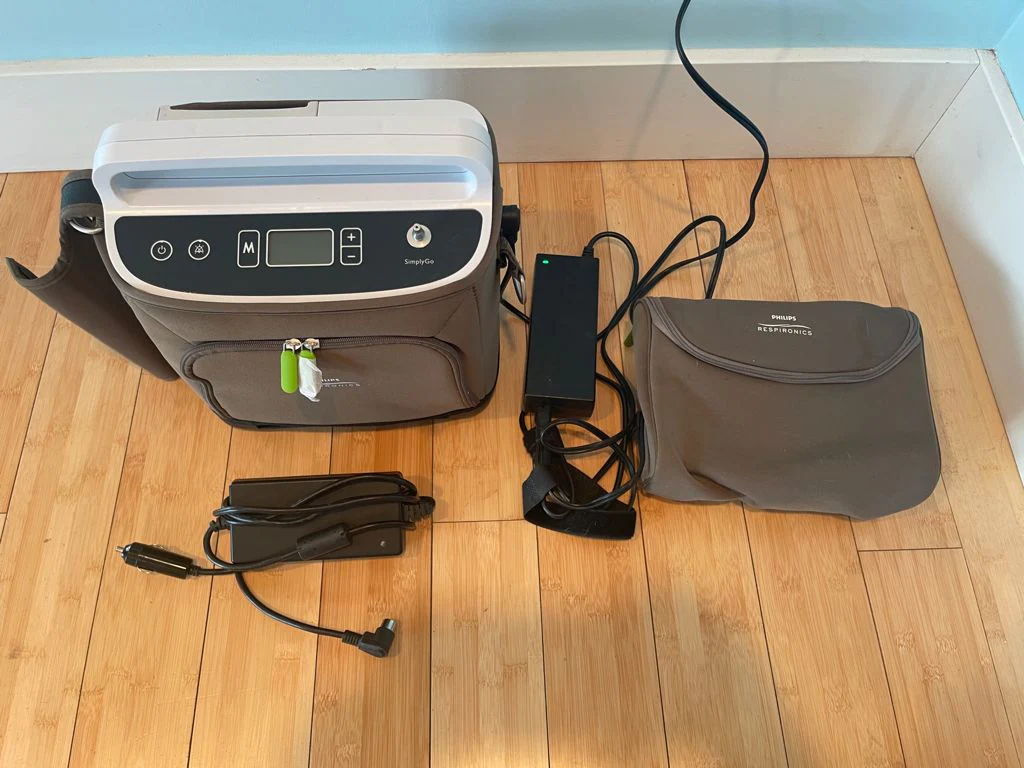What Is the Cost of Refilling an Oxygen Tank for Home Use?
Refilling a standard home oxygen tank typically costs between £8 to £40 per cylinder, though prices fluctuate based on location, tank size, and your chosen supplier. This straightforward answer addresses the most common question for patients beginning home oxygen therapy.
Oxygen tank for home contains compressed or liquid oxygen prescribed for individuals with respiratory conditions requiring supplemental oxygen support. Unlike oxygen concentrators that generate oxygen continuously from ambient air, tanks hold a finite supply that depletes with use. Regular refills become an essential part of managing your oxygen therapy, creating ongoing costs you’ll need to budget for throughout your treatment.
The oxygen tank refill cost depends on several variables that can significantly impact your monthly expenses:
- Cylinder size – Smaller portable tanks cost less to refill than large stationary units
- Geographic location – Urban areas with multiple suppliers often offer competitive pricing
- Service provider type – Hospitals, medical supply stores, and independent refill stations charge different rates
- Delivery options – Home delivery services typically add convenience fees
Understanding these price factors helps you make informed decisions about your home oxygen therapy. Patients should request detailed pricing from multiple suppliers before committing to a refill service, as costs can vary substantially even within the same region. Your healthcare provider or medical equipment supplier can provide specific guidance tailored to your oxygen requirements and local market conditions.
What Factors Influence the Cost to Refill an Oxygen Tank at Home?
Cylinder Size and Refill Costs
Cylinder size directly determines refill pricing, with larger tanks requiring more oxygen and consequently higher costs. A small portable cylinder (M6 or B size) typically costs between £8-£15 to refill, while medium-sized tanks (E or D cylinders) range from £15-£30. Large stationary cylinders (H or K size) can cost £30-£50 or more per refill due to their substantial capacity.
The relationship between tank size and cost isn’t always linear. Some suppliers offer volume discounts for larger cylinders, making the cost per litre of oxygen more economical. Users who require frequent refills might find that investing in a larger cylinder reduces the overall expense per month, despite the higher individual refill cost.
Geographic Location and Service Provider Pricing
Regional pricing variations create significant differences in refill costs across different areas. Urban centres with multiple medical supply companies typically offer competitive rates, whilst rural locations with limited providers may charge premium prices. Areas with only one or two certified refill stations can see costs 30-50% higher than regions with robust competition.
Service provider type also affects pricing structure:
- Hospital-based services: Often charge higher rates (£25-£50) but provide guaranteed quality and immediate availability
- Independent medical supply stores: Usually offer mid-range pricing (£15-£35) with flexible scheduling
- Specialised oxygen suppliers: May provide competitive rates (£10-£30) with bulk refill discounts
- Home healthcare companies: Sometimes include refills in monthly service packages
Equipment Compatibility and Hidden Costs
Additional expenses beyond the basic refill fee can catch users unprepared. Cylinder valve inspections, required every few years for safety compliance, add £20-£40 to the total cost. Regulators and flow metres need periodic calibration or replacement, ranging from £30-£100 depending on the equipment type.
Transport fees represent another consideration. Some providers charge £10-£25 for delivery and collection services, particularly for larger cylinders that aren’t easily portable. Users living beyond standard service areas may face surcharges of £15-£30 per visit.
Maintenance requirements vary by cylinder type. Aluminium cylinders generally require less upkeep compared to steel ones which may need rust prevention treatments.
Where Can Users Refill Their Home Oxygen Tanks?
Users can access oxygen tank refill locations through hospitals, medical supply stores, and certified refill stations. Hospitals typically maintain refill services for patients requiring supplemental oxygen therapy, offering convenient access during medical appointments or emergencies. Medical supply stores specialising in respiratory equipment provide scheduled refill services, often with flexible appointment times to accommodate patient needs.
Common Refill Sources Include:
- Hospitals and medical centres – Most facilities with respiratory care departments offer refill services, particularly for existing patients
- Durable medical equipment (DME) suppliers – These companies provide comprehensive oxygen services, including delivery and refills
- Pharmacy chains with medical equipment divisions – Select pharmacies maintain oxygen refill capabilities alongside other medical supplies
- Respiratory care specialists – Dedicated respiratory therapy centres often provide refill services with expert guidance
Certified refill stations represent another reliable option for obtaining oxygen tank refills. These facilities meet specific safety standards and regulatory requirements for handling compressed medical gases. Certified stations employ trained technicians who understand proper refilling procedures, pressure requirements, and safety protocols. Users can locate these stations through their healthcare provider, oxygen equipment supplier, or by searching for medical gas distributors in their area.
The certification process ensures these locations maintain proper equipment, follow industry standards, and adhere to safety regulations governing medical oxygen handling. Many certified refill stations offer competitive pricing compared to hospital-based services, making them an attractive option for regular refills.
Home Refilling Options
Portable oxygen concentrators with refillable systems present an alternative approach to traditional refill methods. These devices extract oxygen from ambient air and can fill smaller portable cylinders at home. This option eliminates trips to refill locations and provides greater independence for users.
Home refilling requires specific equipment compatibility between the concentrator and cylinders. Users must verify their portable concentrator includes a refill function and that their cylinders are approved for home refilling. The process demands proper training from healthcare providers or equipment suppliers to ensure safe operation.
Important considerations for home refilling:
- Professional instruction on equipment operation is essential
- Regular maintenance of concentrator units prevents malfunction
- Users must monitor oxygen purity levels during refilling
- Not all oxygen tanks are compatible with home refill systems
- Initial equipment investment
How Is the Oxygen Tank Refill Process Carried Out Safely?
Safe oxygen refill practices begin with thorough cylinder inspection before any refilling occurs. Trained personnel examine the tank for visible damage, corrosion, dents, or wear on valves and fittings that could compromise safety during the refill process.
The refill procedure follows a systematic approach to minimise risks. Technicians first verify the current oxygen level using pressure gauges, then securely attach the cylinder to the refill machine using proper connectors. The connection must be airtight to prevent leaks, and staff monitor pressure readings throughout the fill to avoid overcharging the tank beyond its rated capacity.
Critical Safety Precautions During Refilling
Handling oxygen tanks requires strict adherence to safety protocols that protect both personnel and patients:
- No open flames or ignition sources within at least 3 metres of the refill area
- Well-ventilated spaces to prevent oxygen accumulation, which increases fire risk
- Upright positioning of cylinders during refilling to ensure proper gas flow
- Grounding equipment to eliminate static electricity discharge
- Temperature monitoring to prevent overheating during compression
The refill environment must remain free from oil, grease, and combustible materials. Oxygen supports combustion rapidly, making even small sparks potentially catastrophic in oxygen-enriched atmospheres.

Professional Handling Requirements
Certified technicians undergo specialised training in safe oxygen refill practices before performing refills independently. These professionals understand pressure dynamics, valve mechanisms, and emergency response procedures if leaks or equipment failures occur.
Professional handling extends beyond the refill station. During transportation, trained staff secure cylinders in approved carriers, preventing movement that could damage valves or create hazardous situations. They inspect seals and connections after transport to verify integrity before connecting tanks to patient systems.
However, it’s crucial to remember that not following safety protocols can lead to serious consequences. Attempting DIY refills without proper equipment, training, or certification creates serious risks including oxygen leaks, cylinder rupture, or fire hazards. Medical supply companies employ certified oxygen handlers who maintain equipment calibration and follow regulatory standards, ensuring each refill meets purity requirements
How Do Refill Costs Compare to Other Home Oxygen Therapy Options?
Oxygen tanks require refills every few days to weeks depending on usage, with each refill costing £8-£40 ($10-$50), whilst oxygen concentrators extract oxygen from ambient air continuously without needing refills. The choice between these two options significantly impacts both immediate expenses and long-term financial commitments.
Initial Investment Differences
Oxygen tanks typically involve lower upfront costs when rented through medical suppliers or covered by insurance schemes. Concentrators demand higher initial investments, ranging from £400-£2,500 ($500-$3,000) for purchase, though rental options reduce this barrier. Equipment rental Medicare coverage typically includes both options, with patients paying 20% of approved amounts after meeting deductibles.
Ongoing Operational Expenses
The recurring nature of tank refills creates predictable monthly costs. A patient using oxygen 15 hours daily might need 2-3 refills monthly, totalling £50-£120 ($60-$150) annually. Concentrators eliminate refill fees but introduce electricity costs of approximately £20-£40 ($25-$50) monthly, depending on usage patterns and local utility rates.
Long-Term Cost Analysis
Over a three-year period, oxygen tank refills can accumulate to £1,800-£4,300 ($2,160-$5,400), excluding delivery fees or emergency refills. Concentrators, despite higher initial costs, often prove more economical after 18-24 months of continuous use. The electricity expense remains constant, whilst refill costs may increase with changing supplier rates or expanded oxygen requirements.
Insurance and Medicare Considerations
Medicare Part B covers both oxygen tanks and concentrators as durable medical equipment when prescribed by healthcare providers. The 36-month rental period includes maintenance, repairs, and supplies for either option. Private insurance policies vary, with some favouring concentrators due to reduced administrative overhead from eliminating refill logistics. Patients should verify specific coverage details with their insurance providers to understand out-of-pocket responsibilities for each oxygen delivery system.
What Are The Advantages And Disadvantages Of Using Oxygen Tanks At Home?
Oxygen tanks offer several practical benefits of oxygen tanks that make them suitable for many home users. They require no electrical power, making them reliable during power outages and ideal for outdoor activities. Their portability allows users to maintain mobility and independence, with smaller cylinders easily transported for errands, social visits, or travel. Different tank sizes accommodate various lifestyles—from compact portable units for active individuals to larger stationary cylinders for extended home use.
The versatility extends to compatibility with different delivery systems. Users can switch between nasal cannulas, masks, or other oxygen delivery devices without technical complications. Tanks also provide immediate oxygen availability without warm-up time, unlike some electronic alternatives that need initialisation periods.
Limitations of tanks vs concentrators
Limitations of tanks vs concentrators become apparent in daily management. The finite oxygen supply means users must monitor levels constantly and schedule regular refills, creating dependency on suppliers and potential anxiety about running out. Each refill incurs costs ranging from £8 to £40, accumulating to significant annual expenses. Storage requirements for backup cylinders consume valuable living space, particularly for users needing higher flow rates who deplete tanks faster.
Weight presents another challenge. Even portable tanks can be cumbersome for individuals with limited strength or mobility issues. The physical act of transporting cylinders to refill stations adds inconvenience, especially for those without reliable transportation. Users must also coordinate delivery schedules or arrange collection services, which may not always align with their needs.
Tank maintenance demands attention to safety protocols. Regular inspections for damage, proper storage away from heat sources, and secure handling during transport require vigilance. The risk of running empty unexpectedly poses genuine health concerns, necessitating backup supplies and careful planning for extended periods away from home. Visit https://pmc.ncbi.nlm.nih.gov/articles/PMC6876135/ to get more about Oxygen devices and delivery systems.
How Can Users Manage Costs While Ensuring A Reliable Oxygen Supply?
Managing oxygen therapy costs starts with comparing prices across multiple certified refill stations and medical suppliers in your area. Call at least three different providers to request quotes for your specific cylinder size, as pricing can vary by £10-£20 per refill between competitors. Many medical supply companies offer loyalty programmes or bulk refill discounts that reduce the per-unit cost when purchasing multiple refills upfront.
Building a relationship with a single reliable supplier often yields better pricing than using different providers sporadically. Some suppliers provide subscription-based refill services where you pay a flat monthly fee for unlimited refills within a set radius, which proves economical for frequent users. Ask potential suppliers about their emergency refill policies and after-hours availability, as premium charges for urgent services can significantly impact your budget.
Choosing suppliers requires verifying their certification and safety standards alongside their pricing. Check that any refill station holds current accreditation from relevant medical gas authorities and maintains proper insurance coverage. Request documentation showing their compliance with oxygen handling regulations, as cutting costs by using uncertified providers introduces serious safety risks.
Your healthcare provider serves as a valuable resource for identifying cost-effective refilling methods tailored to your usage patterns. They can assess whether switching to a different cylinder size would reduce your overall expenses or if transitioning to an oxygen concentrator makes financial sense based on your daily oxygen requirements. Some patients discover that their insurance coverage extends to specific suppliers or refill methods, potentially eliminating out-of-pocket costs entirely.
Exploring alternative refilling options through your medical team may reveal programmes offering subsidised refills for qualifying patients. Many hospital networks operate discounted refill services for their registered patients, whilst charitable organisations occasionally provide financial assistance for oxygen therapy costs.
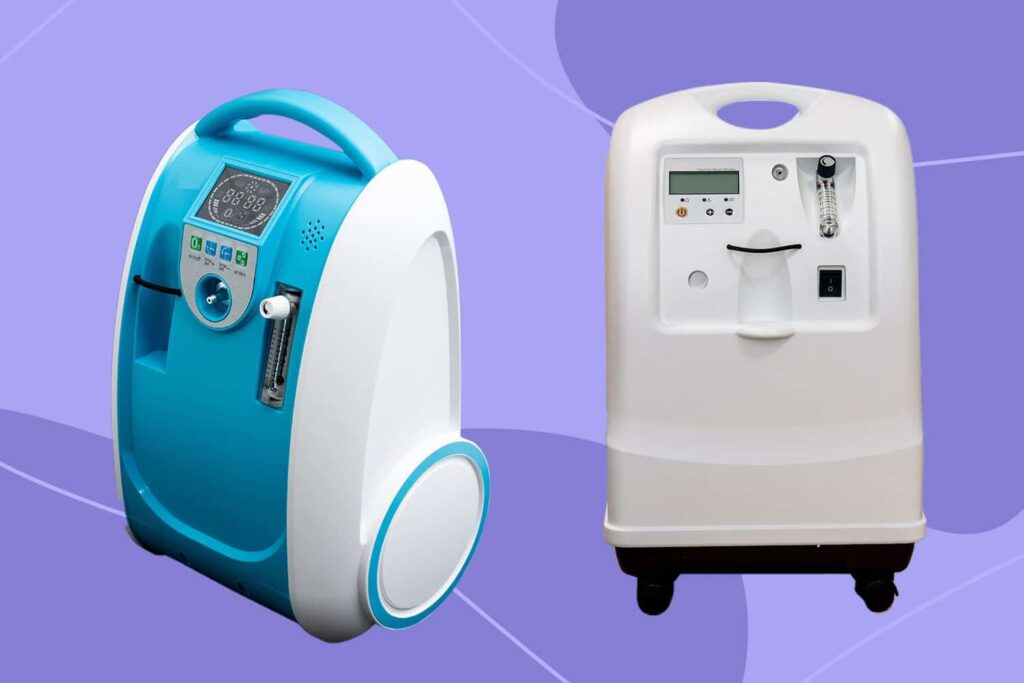
Conclusion
How much does it cost to refill an oxygen tank for home use? The answer ranges from £8 to £40 per standard cylinder, but the true value lies in balancing affordability with safety and reliability.
Managing the cost of home oxygen therapy requires careful planning. Compare prices across certified suppliers while ensuring strict quality standards. Never compromise safety for savings—damaged cylinders or uncertified refill stations pose serious health risks.
Being prepared for emergencies means having backup supplies and knowing multiple places where you can get refills. Keep detailed records of when you refill, how much it costs, and who your suppliers are. This summary of oxygen tank refills will help you spot patterns and find ways to save money.
Want to reduce your home oxygen therapy costs? Talk to your healthcare provider about what you need. They can suggest ways to save money on refills, check if using concentrators could lower your long-term expenses, and introduce you to trustworthy suppliers with competitive prices. Your health relies on having consistent access to oxygen—so it’s worth putting in the effort to find solutions that benefit both your wellbeing and budget.
Related : Best Oxygen Machines for Home Use: A Practical Buyer’s Guide
FAQs About Oxygen Tank Cost for Home to Refill
Refilling a standard oxygen tank costs between £8 and £40 per cylinder, depending on tank size, supplier, and location.
2. What factors affect oxygen tank refill costs?
Costs vary by cylinder size, geographic location, supplier type, and delivery options such as home service fees.
3. Where can I refill my home oxygen tank?
You can refill tanks at hospitals, medical supply stores, pharmacy chains, or certified oxygen refill stations.
4. Can I refill an oxygen tank at home?
Yes, but only with approved home refill systems and after professional training from your healthcare provider or supplier.
5. How often do oxygen tanks need refilling?
Frequency depends on usage and tank size — typically every few days to weeks for regular users.
6. Are refill costs covered by insurance or Medicare?
Yes, Medicare Part B and some private insurers cover oxygen refill costs when prescribed for medical use.
7. How do refill costs compare to oxygen concentrators?
Concentrators have higher upfront costs but no refill fees, making them more cost-effective long-term than tanks.
8. What safety precautions are needed during refilling?
Keep cylinders away from flames, ensure ventilation, and only use certified technicians for refills.
9. How can I reduce oxygen refill costs?
Compare prices from multiple suppliers, ask about bulk refill discounts, and explore subscription or insurance plans.

